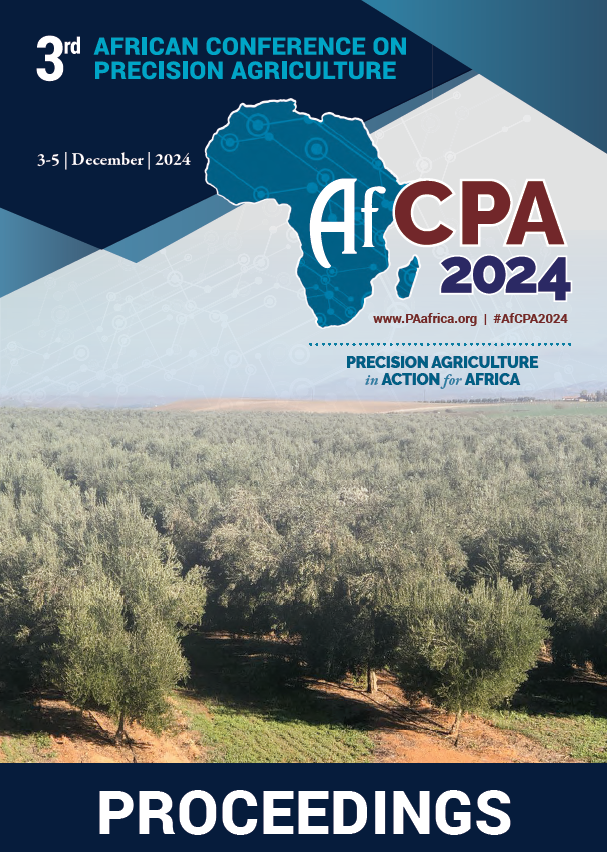Download the Conference Proceedings
Get your copy of the 2024 African Conference on Precision Agriculture Proceedings today! Download the PDF file and view all of the available proceedings.
Proceedings
Authors
| Filter results1 paper(s) found. |
|---|
1. Precision Farming Technology to Increase Soil and Crop Productivity in Egypt Using Remote Sensing and GISPrecision farming or site-specific land management is a new approach for development the agriculture processes to increase the soil and crop productivity with saving efforts and costs. Precision farming includes many techniques such as Global Position Systems (GPS), Geographic Information Systems (GIS), Remote Sensing (RS), Yield Monitors, Internet of Things (IOT), Variable Rate Application (VRA), Yield Mapping, Site-Specific Management Zones (SSMZ) and Crop Modeling. SSMZ delineation can be improved... A. Belal, M. Elsayed , M.E. Jalhoum, M. abdelatif , E. Hendawy , M. Emam, M. Zahran |
